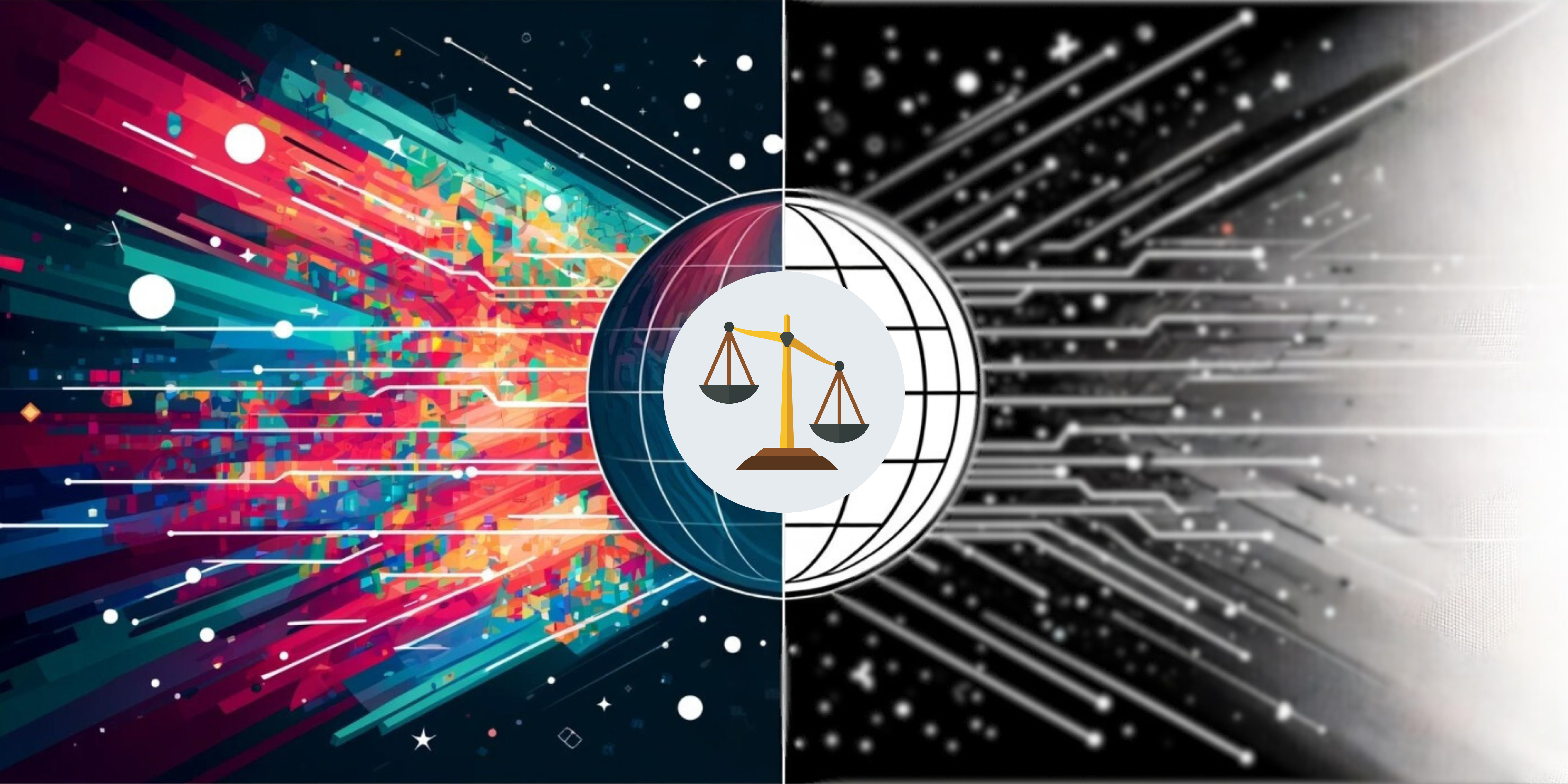By: Melody Kazemi and Azin Mohajerin
The Iranian government has long sought to exert rigid control over its population, using a range of tactics to suppress dissent and restrict human rights and freedoms. These violations only become more extreme when it comes to the rights of marginalized communities, including women.
Iran’s legal framework facilitates the systematic curtailment of women’s rights, perpetuated through direct discrimination and normalization of harassment and the use of force and violence against women. In recent years, technological advancements have provided authorities more insidious means for monitoring and restricting human rights within the country. Iranian officials have expressed enthusiasm for the potential of surveillance technologies, such as facial recognition, to enable more invasive, efficient, and widespread oppression with an emphasis on targeting women.
Iranian authorities have turned to both old and new technologies to enforce mandatory hijab-wearing, carried out by various branches of the so-called Morality Police force. The tragic death of Mahsa Jina Amini in Morality Police custody last September sparked nation-wide protests, leading to a brutal crackdown by security forces that saw thousands arrested, hundreds killed and four executed in relation to the protests. The uprising also brought global attention to Iran’s discrimination against women and their treatment as second class citizens, in particular through the country’s harsh hijab laws.
Despite conflicting reports on an Iranian official’s comments about the disbanding of the Morality Police last December, in reality the Mortality Police and the mandatory hijab law are still very much in place. Instead, Iranian authorities are thinking of new ways to enforce hijab laws. Iran is shifting its focus to using new and obscure ways for enforcing the law to avoid scrutiny and attention being brought to the issue, especially in light of last year’s protests.
Over the past year, authorities have been talking up the use of facial recognition and other technologically-assisted methods as a more hands-off approach to identifying and punishing women wearing “improper” hijab. It seems these claims are an attempt to reassure the public and observers of a move away from the violent enforcement methods such as those that surrounded Amini’s death, and to manage the reputation of the Morality Police infamous for its brutality. But how much do we really know about the actual role facial recognition technologies are playing in Iran’s hijab enforcement and its broader suppression of dissent?
In an interview last September- just weeks before Amini’s arrest – the Head of Iran’s Headquarters for the Promotion of Virtue and the Prevention of Vice, Mohammad-Saleh Hashemi-Golpayegani claimed that cameras used in public spaces would be used to detect “inappropriate and unusual movements,” including “failure to observe hijab laws” by comparing captured images against Iran’s national ID database containing biometric data on most citizens. Hashemi-Golpayegani further said that women considered to be violating the law could receive a fine.
As reported by Wired, other officials such as Mousa Ghazanfarabadi, MP and the Head of the Parliamentary Legal and Judicial Committee, expressed support in an interview last October for enforcing hijab laws using cameras to “reduce police presence and contact between citizens and the police.” He also spoke of additional penalties for non-compliance, such as barring women from accessing vital services such as banking, public transport, and other government services, and even preventing them from seeking certain types of employment.
In the latest development from this March, Iranian MP Bijan Nobaveh also spoke of plans in the Majles (parliament) to introduce “smart” and “indirect” means to enforce mandatory hijab using street cameras. He echoed Ghazanfarabadi’s comments that those not complying with hijab laws in public would be identified and notified using “smart” methods, presumably through SMS. He added that if warnings were ignored, women could be “cut off from accessing phone and internet services.” While there have been inconsistent reports on the status of the plan, in a recent interview another MP, Hossein Jalali spoke of a “chastity and hijab” bill “being finalized” in Majles which confirms Nobaveh’s comments. Jalali added that under the bill “there will be no physical enforcement [of hijab law]” with punishments also including fines, and revocation of passports and driver’s licenses, also affirming the use of social exclusion to further restrict the rights of women.
Restricting internet access, social media, and confiscating electronic devices is a common punishment in Iran, especially for journalists and activists. For example, in 2021, activist Leila Hosseinzadeh was sentenced to a two year social media ban in addition to a prison sentence. Some of those released following the recent protests have also received bans on using smartphones for several years.
Despite the comments made by officials, the specific types of facial recognition technologies, the extent of their use, and their origins – whether developed domestically or abroad – remain unclear. In late 2021, IPVM, a surveillance research group, reported on a contract between the Chinese video surveillance company Tiandy and Iran’s Islamic Revolutionary Guard Corps (IRGC), police, and the military, though exact details of this contract are still unknown. More recently, there have been reports of other Chinese companies such as Hikvision and Huawei providing surveillance technologies to Iran.
Though Iranian authorities claim to be using facial recognition technology, evidence points to their continued reliance on other, less advanced methods for identifying individuals. Back in 2019, social media users shared SMS warnings they received from Iran’s police force about improper hijab-wearing in their cars. The Police Chief at the time revealed that vehicles were being monitored as part of a hijab enforcement initiative called the “Monitoring Plan.” Anecdotal reports of men with long hair receiving the same warning texts hint at the use of older cameras and technologies for detecting hijab violations.
During the recent protests that swept Iran, the government continued to use long-established CCTV cameras in public spaces to monitor and apprehend protestors. Against this backdrop, large numbers of women are bravely choosing to remove their head coverings in public in defiance of the hijab law, leading to the arrest and detention of a number of individuals. The circumstances surrounding some of these arrests suggest that security forces are still resorting on basic measures, such as posting pictures and videos on pro-government social media channels to employ the help of their followers in the identification process.
Even in democratic countries, the use of advanced facial recognition technologies presents major risks to human rights. But in Iran, the deployment of such technology raises even greater concerns due to the lack of safeguards for personal privacy, rampant human rights violations, particularly against women and minorities, and the suppression of dissent which has only intensified in the wake of recent protests placing them under even greater threat.
In the absence of robust data and privacy protections in line with international standards, lack of transparency, and without an independent judiciary, facial recognition tools can be easily abused in Iran, leading to catastrophic consequences for individuals who have no means of seeking redress. Combined with the rollout of biometric national IDs, and the digitization of public services, greater digital databases can be created to identify and monitor citizens, further eroding anonymity in public spaces and posing a threat to women and marginalized people in Iran.
As surveillance technologies continue to advance and spread across the world, it is crucial for the international community to remain vigilant about how facial recognition and surveillance technologies can contribute to human rights violations, especially the threats they pose to marginalized groups under authoritarian governments. Such technologies almost invariably disproportionately target these groups, whether intentionally or not, making it essential to consider effective safeguards on their export or even a ban on their use in authoritarian countries such as Iran where extensive human rights abuses persist.
In developing and selling such tools, tech companies must also pay close attention to how they can contribute to grave human rights violations, bearing in mind their obligations under the UN Guiding Principles on Business and Human Rights. These companies should ensure their policies are updated to reflect the potential misuse or abuse of their products and services under authoritarian governments such as Iran, providing improved and more relevant protections for their users based on different contexts they can be used in. This should involve active engagement with civil society actors with an awareness of local contexts to enable them to address the unique challenges faced by vulnerable population.



